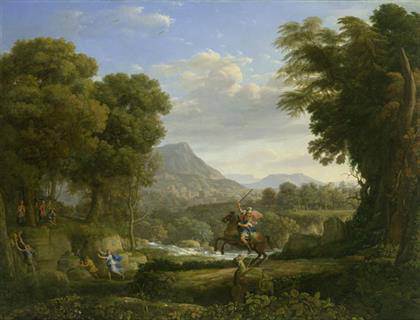
Charles Bell
Paragon, 1988
Courtesy of Louis K. Meisel Gallery, New York
Image © Louis K. Meisel
Photo © Institu für Kulturaustausch, Túbingen

Richard Estes
Nedick’s, 1970
Colección Carmen Thyssen-Bornemisza, Madrid
Image © Richard Estes
Photo © Jacqueline Mabey
Hyperrealism 1967-2012 / Thyssen Museum, Madrid In the late 1960s the USA saw the emergence of a new trend in painting that focused on the realistic representation of scenes and objects from everyday American life. Exhibition at Thyssen Museum offers the first complete survey of Hyperrealism. 22 March to 9 June, 2013.]]>
Source: Thyssen Museum, Madrid
The exhibition starts with the great American artists of the first generation such as Richard Estes, John Baeder, Robert Bechtle, Tom Blackwell, Chuck Close and Robert Cottingham, then move on to Hyperrealism in Europe and to artists of subsequent generations.
Urban landscapes, shop windows, fast food restaurants, the latest models of cars, gleaming motorbikes, pinball machines, tin toys and bottles of tomato ketchup are all fragments of daily life, everyday locations and consumer items that become artistic motifs. The Hyperrealist painters take their subjects from the world around them, making the everyday visible through their paintings.
These inconsequential motifs are first capturedthrough photography then translated onto the canvas using a painstaking method involving a range oftechnical procedures such as the projection of slides or a grid transfer system. They are generally largeformat works painted with such precision and exactness that the canvases themselves have aphotographic quality. Nonetheless, they are created using a process that has nothing to do with theimmediacy implied by photography.
Following the pioneering use of silkscreen by Pop artists such as Warhol and Rauschenberg, it was theearly Hyperrealists who started to use the medium in an overt manner, thus making it a “legitimate”tool. Photography was thus the starting point and apparently the end result, but it was not the aim. NoHyperrealist painter aspired to compete with it and the motivation was completely different. Theworks of these artists seemed to reproduce reality butthey in fact created a new graphic reality.
The pioneers of Hyperrealism analysed all these issues and made them the subject of their paintings,working in a more or less independent manner. In the early 1960s on the West Coast Robert Bechtlestarted to produce the first truly photo‐realist paintings, while at almost the same time in New YorkRichard Estes began to produce his characteristic shop windows and urban views, Chuck Close to painthis famous portraits, and Audrey Flack, the only women in this first generation, to produce her firstworks based on photographs.
Related content
Impressionism & open-air painting. Corot to Van Gogh – Thyssen Museum (exhibition, 2013)
Follow us on:

